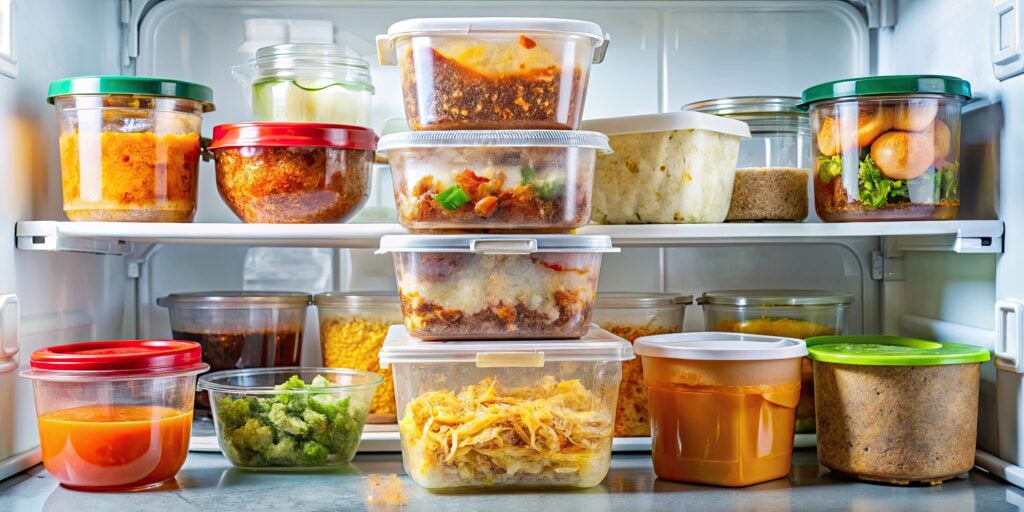Even the most organized kitchen can hide a few habits that quietly put your health at risk. Food hazards don’t always look obvious. They often happen in the middle of everyday routines while preparing dinner, storing leftovers, or cleaning up. Once you know what to watch for, these small oversights are easy to correct and can make a lasting difference in how safe your meals truly are.
1. Mixing Raw and Cooked Foods Without Realizing It
It’s common to prepare several ingredients at once and reuse the same tools without thinking twice. A board for meat becomes a board for vegetables, or a knife cuts raw chicken and then slices bread. It may feel efficient, but these habits allow bacteria to move from one food to another, increasing the risk of contaminated food.
This is where the dangers of cross-contamination come in. Raw meat and seafood can carry biological food hazards that transfer easily to food products that won’t be cooked again. The solution is simple: use separate boards and utensils, wash them well with warm, soapy water, and dry them completely before reuse. It takes only a few extra moments but helps prevent food poisoning and other foodborne diseases.
Even small adjustments, like keeping one cutting board for produce and another for proteins, can make your kitchen noticeably safer. Once you start paying attention, you’ll find it easy to handle ingredients with more care and confidence, just like a trained food handler would.
2. Storing Food at Unsafe Temperatures
Temperature control is one of the most overlooked parts of food safety. Many people keep the refrigerator too warm or leave cooked food out longer than they realize. These small lapses create safety risks that can lead to food contamination.
Keep your refrigerator at or below 40°F and your freezer at 0°F. When storing leftovers, cool them within two hours after cooking and place them in shallow containers so the temperature drops evenly. If you need to thaw frozen food, do it in the refrigerator instead of on the counter to prevent pesticide residues and bacteria from multiplying.
It also helps to keep raw meat on the lowest shelf to prevent drips onto other food. Use a meat thermometer to check cooking temperatures, especially for poultry and seafood. These small details help maintain food safety standards and protect both freshness and flavor.
Cutting boards
, sponges, and towels may look clean, but often hold more bacteria than you think. Sponges, in particular, trap moisture and become breeding grounds for germs. Wiping counters or utensils with the same sponge spreads contamination instead of removing it, and sometimes even transfers foreign objects or physical contaminants into food.
Replace sponges frequently or sanitize them in hot water. Once a cutting board has deep grooves, it’s time for a new one. Those small cracks hold residue that’s hard to remove completely. Plastic boards are easy to replace, while wooden ones need regular scrubbing and thorough drying. Avoid using damaged tools, as they can harbor bacteria and make cleaning less effective.
Clean your kitchen surfaces with hot, soapy water, then use a disinfectant after handling raw food. Paying attention to hazard identification and hazard control helps keep your kitchen truly clean, not just tidy.
4. Skipping Handwashing Between Tasks
Your hands touch more than you realize while cooking-ingredients, utensils, cabinets, and even your phone. Each touch transfers small amounts of bacteria that can easily end up in your food, especially if good hygiene practice isn’t followed.
Regular handwashing might sound simple, but it’s often forgotten when things get busy. Use warm water and soap for at least twenty seconds, especially after handling raw meat or seafood. Change towels usually, since damp ones can hold bacteria and undo your effort without you realizing it.
Focusing on personal hygiene reduces the spread of viruses like Hepatitis A, which can contaminate food through unwashed hands. When you treat handwashing as part of your cooking process, it becomes automatic. Clean hands protect you, your food, and everyone you cook for, supporting a stronger food safety culture at home.
5. Misjudging Leftovers and Expiry Dates

Leftovers are convenient, but keeping them too long or storing them carelessly increases your risk of foodborne illness. Dishes made with mayonnaise or dairy, such as egg salad sandwiches, can spoil faster than you might expect if they’re left out for even a short time. Food can look and smell fine even when it’s no longer safe to eat. Bacteria don’t always show warning signs, which is why time limits matter.
Eat refrigerated leftovers within three to four days. Label containers with dates so you don’t lose track. When reheating, make sure the food reaches at least 165°F so it’s hot throughout. Microwave ovens can heat unevenly, so stir or rotate food to ensure it’s cooked evenly. Reheating only until it’s warm isn’t enough to eliminate bacteria.
Pay close attention to expiration dates as well. They’re not meant to create waste but to help you stay safe. ‘Use by’ and ‘best before’ dates are there to guide you, not to be ignored. Following them protects both your health and the quality of your meals.
Final Thoughts
Safe cooking doesn’t require complicated rules. It comes down to awareness and consistency. When you handle food carefully, maintain clean tools, and store ingredients properly, you build habits that protect you every day.
Each thoughtful choice supports food safety standards and creates a cleaner, healthier, and more mindful kitchen. A strong food safety culture begins at home-where every meal reflects both care and confidence.
–>
Reader Interactions
